STEMpowering Youth: Student Projects of the third cycle
“STEMPOWERING YOUTH” for a third straight cycle: Meet our new crop of young scientists!
“STEMpowering Youth” is an extracuricullar STEM (Science, Technology, Engineering and Math) program which has been implemented by Scico in cooperation with Ellinogermaniki Agogi and the support of Vodafone Foundation since 2017. The program’s aim is to bring innovation in school classes of remote Greek areas: In each cycle of the program, 13-16 year-old students are trained with interactive educational tools on topics of Natural Sciences, Astronomy and Programming, and participate in experiments as well as design and construction of science projects.
At the end of each course round, each team is tasked with creating their own project, in which they have to research, design, and manufacture a construction aimed at resolving a real-life issue of their local community. This gives them the opportunity to learn the steps scientists and researchers take in order to implement an idea: from identifying the problem to finding and implementing a solution by applying principles of science and innovation. The students participating in this cycle created 51 unique projects! As budding scientist/engineers they combined creative thinking with their newfound programming skills and used the arduino micro-controller to assemble the sensors of their constructions! Details about each individual project are available in our educational community in the “Open Schools for Open Societies” portal. Let’s meet our new crop of young scientists, inventors and innovators!
In Komotini, an area used to harsh and cold winters, two budding engineers used creative thinking to create a “smart cover for household-boilers” which helps residents know when they’re running out of heating fuel by easily and accurately measuring the level of petroleum with an ultra-sound sensor connected to an LCD screen. Flooding is another problem that comes with cold and rainy winters: a second group of innovators designed and created a functioning model where they tested an automated anti-flood alarm system that detects rising water levels without moving parts. Their system pumps water out if necessary, and after some modifications will be functional and ready to use in a real setting. And if you thought there was any household danger that the students of Komotini hadn’t thought of a solution for, another young inventor designed and programmed “Fire Detector Ultra Komotini (FDUK)” a fire-alarm system equipped with temperature, smoke and infrared radiation detectors, which is designed to place a call to the resident’s mobile phone if it detects a fire! Komotini is also known for its cyclists, and student noticed that bicycle-only zones are often blocked by the presence of illegally parked cars! He set out to solve this problem by building a small scale model of a well-known Komotini street, where he installed an illegal parking alarm, which utilises a strategically placed laser emitter and sensor- when their connection is severed, a signal is sent to a remote receiver, setting off the alarm.
A team of two students created the "Smart School Bell" , in order to replace their school’s malfunctioning bell which malfunctioned due to regular power-cuts, cutting into precious break time: Their device is based on a real time clock (RTC), and is autonomous, easy to program, and utilises a touch screen for easy use! Another young scientist from Komotini came up with a brilliant idea to protect sunbathers from heat-shock and dangerous solar radiation:Using a wooden board and LED tapes, she constructed a "beach thermometer with UV measurement" bill-board, which displays real-time temperature and UV levels radiation levels obtained through appropriate sensors. The board is big enough to be visible from a distance, letting people know when they need to seek some shade.
In Orestiada, a group of three young inventors designed an automated plant-watering system which uses a humidity sensor to find out if the plant is “thirsty”, and provides water by turning a motor-operated water dispenser at the right angle- applying the principles of hydrodynamics and saving precious water at the same time. Another group of students built a small-scale model of a city street where they showcased their automated school traffic-policeman: when a pedestrian approaches the crossing, activated distance sensors turn on the red traffic light and lower a motor- powered bar, stopping traffic and letting students cross safely. Three STEMPowered colleagues thought of a way to let their classmates know exactly how noisy they are being in class, by making a noise-meter, which has three different lights corresponding to the different levels of ambient noise it receives through sound sensors: the red light lets overly enthusiastic students know when they’re disrupting class, and adorably discourages yelling. But, because fun (during school breaks!) is one the most important things in life, two young inventors from Orestiada used their skills to build a "crazy robot" which hops hilariously around when you activate its motor by hitting the connected sensor with a laser beam.
In remote Didimoteixo, a second team of budding fire-fighters applied their love of robot cars to create a moving fire-alarm: their robot patrols around the room and sets off an alarm when its smoke sensor detects a fire. Farming is a major occupation in Didimotixo: two young innovators decided to tackle daily problems of work in a farm by creating an Arduino-based multi-purpose radar sensor. Detection of movement through a revolving ultra-sound sensor and can be visualized on a computer screen through a processing environment or on a smartphone through an app the students designed using App Inventor. Their radar could be used to automatically open and close barn doors when the animals are approaching or detect and repel unwanted birds by activating a sound-emitting canon.
Three students in Iasmos, Rodopi, designed, programmed and created a gas-leak alarm system: their Arduino-based gas sensor is meant to be installed near gas-storage or transport areas, and is programmed to set off red-lights and a sound alarm when gas rises above the allowed safety level. Two groups of students from Iasmos focused on a local and global problem: accessibility for blind and visually impaired members of the community. The first group designed a modified guide cane, which is equipped with distance sensor and a buzzer which alerts the user to the presence of a barrier. The second group used an Arduino-board, LED lights, and a speaker to make a modified traffic light, which lets people know when the light is red or green by emitting different sounds.
Moving from Thrace to the NW Aegean, we meet the young inventors of Mytilini: Here, the “fire-fighters” from Komotini and Didimoteixo could co-operate with a team of two colleagues who programmed and built an Arduino-based fire sensor and alarm with a flame sensor and a sound-emitting buzzer. Mytilini also expands our household-protection team: here, a young engineer designed a “smart lock” system: using an RC522 RFID card reader, the user must place the correct card in the card reader, in order for the green light to turn on and access to be granted.
Three young inventors thought of away to fully take advantage of the Aegean sunlight: they designed and built an Arduino-based smart solar panel array which rotates on its base so that solar rays always fall on it at a 90% degree angle, maximizing energy efficiency. Two of their colleagues went a step further, building an autonomous power station with weather sensors, to help give power access and weather readings to farming fields. It consists of a solar panel which also follows sun angles based on the readings of photo-sensitive sensors, and stores energy in a powerbank. The panel’s rotation on a metallic arm is directed by a servo and stepper motor. At the same time, humidity, temperature and UV/IR/visible light sensors give weather readings which the user can access through an LCD screen.The system also gives "farmer's advice" by comparing readings with average levels and advises the user about appropriate steps.
From Mytilini to Samos, where a group of three students, fresh from their experience in the “Aegean Robotics Competition” of 2018, decided to apply their robotics skills to address the issue of trash-removal from school grounds, hoping to encourage their classmates not to litter. Their automated trash-collection arduino vehicle detects trash with an ultrasound-sensor, picks it up a metal robotic arm claw and is guided to the trash-can with its infra-red sensors- almost ready for Mars exploration! Three young scientists built a fully functional portable weather station which they have installed in their school. It is equipped with temperature and humidity sensors, and detects rain or snow-fall with ultra-sound and measures wind-speed using a mini wind-turbine built from repurposed materials! Another group of students decided to enrich the boredom of school breaks by using the Raspberry Pi microcontroller to build their own fully functioning Retro Arcade gaming machine. Their project gave them the opportunity to learn about computer architecture and assembly, arcade emulators and game design- and they also got to play PAC-MAN!
In Rhodes, three students created a safety alarm for pedestrians, using distance sensors. In Kos, a group of environmentally aware inventors decided to fix a broken fire-risk chart and automate it: they designed an automated daily fire-risk chart, which measures temperature and accordingly rotates the gauge to indicate low, moderate or high risk of fire- helping protect the people and the historic forests of their island. Three of their classmates were inspired by the same idea as their noise-detecting colleagues from Orestiada, and took it city-wide: Their hand-carved noise-pollution monitor records and communicates to bystanders the sound levels they are exposed to-helping to protect the environment as well as people’s nerves!
Proving that great minds think alike, and the importance of fire-protection, three young scientists from Leros also designed their own automated fire-risk monitor/forest fire-alarm, equipped with temperature and smoke sensors: when temperature levels rise or smoke is detected a buzzer sounds and a phone-call is placed to the fire-department! In Leros, water pressure from the local water supply network is very low, and water is in short supply- four young engineers decided to help by designing and building a smart water deposit an automated system which measures the water level and gives a green, yellow or red light indication depending on the sensor reading.Another team of four students decided to tackle a problem closely affecting their daily lives, a dimly-lit steep staircase that caused one of their classmates to break this leg. They designed and installed an automated motion sensor-activated lamp.
Have you ever tried to measure something that is too long for a measuring tape, and you annoyingly need someone to hold the other end? Don’t worry, a team of four students have you covered- they their own arduino-based “invisible measuring tape" which uses an ultra-sound sensor coupled with a potensiometer to measure distances, which it displays on an LCD screen- the system is hot and ready for use!
Traffic jams caused by big vehicles, such as the school-bus in the narrow, bi-directional streets of Leros was the every-day problem addressed by four young inventors: Their "Smart Traffic Light" utilizes two stations equipped with ultrasonic sensors capable of measuring speed and height of passing vehicles, each placed on one end of the street: When the station on one end detects a big vehicle, such as a bus, entering the street, the station which controls entry from the opposite direction turns on a red light, stopping other vehicles from entering at the same time. When the bus traversing the narrow street is detected by the station of its destination, the green light is given for vehicles moving in the opposite direction to enter. This innovative system is still a small scale model, but the team has had talks with the mayor and the technical service of the municipality of Leros about implementing their system in a real setting!
Leipsoi are a cluster of 30 small islands, full of rocky islets and capes- lighthouses are essential for safe passage of ships and shipping boats. A class of 13 students put their skills to good use, creating a fully functional lighthouse model, whose light sensors allow it to turn on its LED array when it gets dark. But they didn’t stop there: they also designed and built a small-scale model of the local winery, equipped with an automated LED light array- learning about wine-production and the local manufacturing products as well as coding and construction. Finally, they turned to fun, applying coding and construction skills to make a functional arduino-based Lego® car.
From the tiny islands of Leipsoi we move to Crete! In Vamos, Chania, four socially aware students built their “talking thermometer", a room temperature thermometer for the blind and visually impaired. It reads the room’s temperature indication aloud when activated by a distance sensor, using sound clips recorded by the students. Inspired by a family member’s disability, another team built a “power sensor glove" which measures the pressure exerted by the fingers through an LCD screen- its aim is to help people who have lost their sense of touch know how much strength they are applying. A third team designed and built a system for deaf-blind communication which uses and arduino circuit and two mobile phones to turn written messages to audio and vice-versa.
Like their colleagues in Mytilini, the students of sunlit Chania also came up with ways to harness solar power: their solar charge controller uses a modified solar panel to charge a battery and turn a night-time light, and displays charging levels and temperature in an LCD control panel. A group of colleagues came up with an ingenious way to preserve energy: their visitor-counter/automatic light-switch detects the number of people entering a room, using motion sensors- and turns off the lights when when the room is empty! Another team of innovators keen on water preservation built and installed a fully functional automatic plant watering system for their school garden, which is guided by humidity sensors.
In Moires, Herakleion, teams of young scientists decided to bring automation to the local farming sector: Four young inventors constructed a “smart chicken-house" which consists of an automated animal watering trough that refills automatically through an electromagnet-coupled hose when the water sensor levels are too low, and a feeding trough that re-fills automatically or at the push of a button- and if the sensor detects food has run out? Don't worry, it warns the owner by SMS!
Trying to help local plant farmers preserve water, a team of three young engineers designed and built an fully functional automated field-watering system: the control panel measures soil moisture levels, and directs the opening of the flow in the watering system, controlled by a water pressure sensor. A second team of three students from Moires went full scale: they designed and built an arduino-based fully automated greenhouse control system which uses its various sensors to measure wind speed, humidity, temperature, light and soil moisture levels, and in response controls the watering system as well as the windows, opening and closing them to adjust conditions by using an old bike tire as a lever! The system is even able to report conditions via SMS, and has been tested in a real greenhouse.
In Spili, Rethimno, a team of three students designed a small-scale “smart trash-can" , equipped with a motor which opens and closes it at the push of a button, and an ultrasound sensor which detects when it's full and lets people know. Unfortunately, fire is a really big problem all over this country in the summer months, but our students are on it: two more students from Rethimno joined the “STEMPOWERING YOUTH” national "fire safety squad" , by building their own fire alarm. Another socially-conscious team of inventors designed and built a robotic “helping hand”, programmed to pick up and move and release objects, in order to help members of the community with motor disabilities.
The final stop of “STEMPOWERING YOUTH” was the town of Siteia, Lasithi, where the efforts of water preservation continued: one team created a water-flow measuring system aimed at reducing excess water use by measuring the quantity of water that has gone through the gauge. With the same aim, two bright environmentalists designed and built an arduino-based small scale automated watering system for house-plants. Four of their colleagues addressed the problem of water scarcity in a different way, by building a small scale solar evaporator for water desalination- a low-cost innovative solution to get water for watering use by applying simple scientific principles: salt-water is entered in a closed compartment, and the evaporating, desalted water is concentrated in a second, clean compartment and flows off for use.
Three Siteia students addressed a common problem for the elderly patients who are obliged to take a large number of different medications at different times of the day: their arduino-based “pill reminder" device is a high-tech medication case with numbered compartments, which is programmed to store the times and days of medication use and display them on an LCD screen. When it's time to use a pill, a buzzer sounds until the user de-activates it and takes the right pill based on the number displayed on the screen!
Three classmates combined their love of science and invention with their love of athletics, creating an automated system to measure finish times in running races. Their low-cost version of the “photo-finish” utilizes ultrasound sensors to record the times and order in which athletes cross the finish line. In their video, the deputy mayor, a former athlete, enthuses over their creativity and the benefits of their idea. Finally, a team of young inventors focused on a daily problem close to their heart: class being disrupted when students to take necessary supplies for their next class before their classrooms are locked for the break: Their class-information board is programmed to prominently display the name of the next class, so students know to prepare accordingly!
 English
English Ελληνικα
Ελληνικα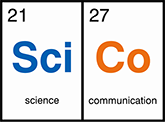
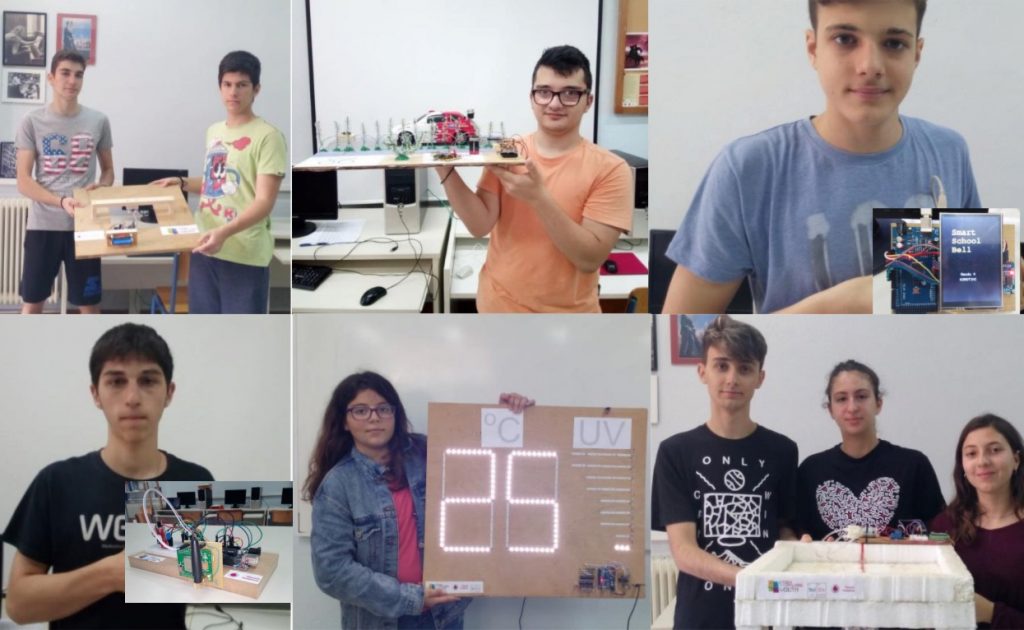

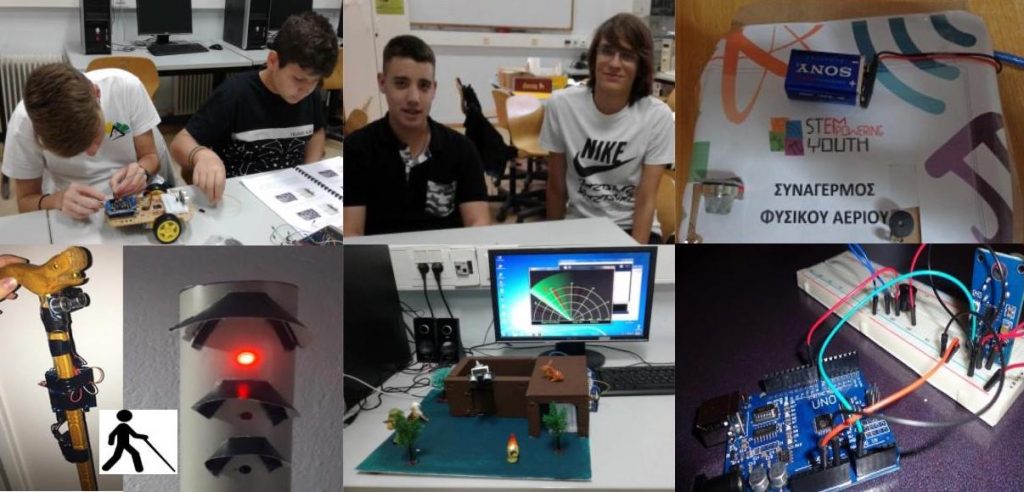
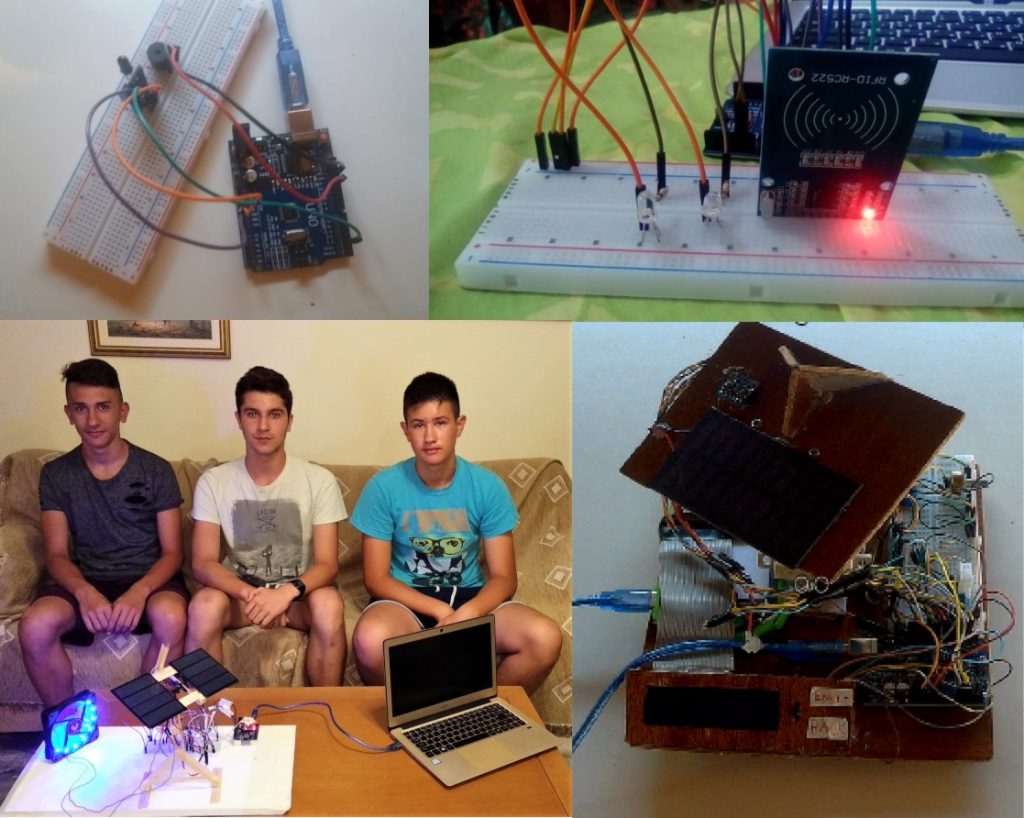
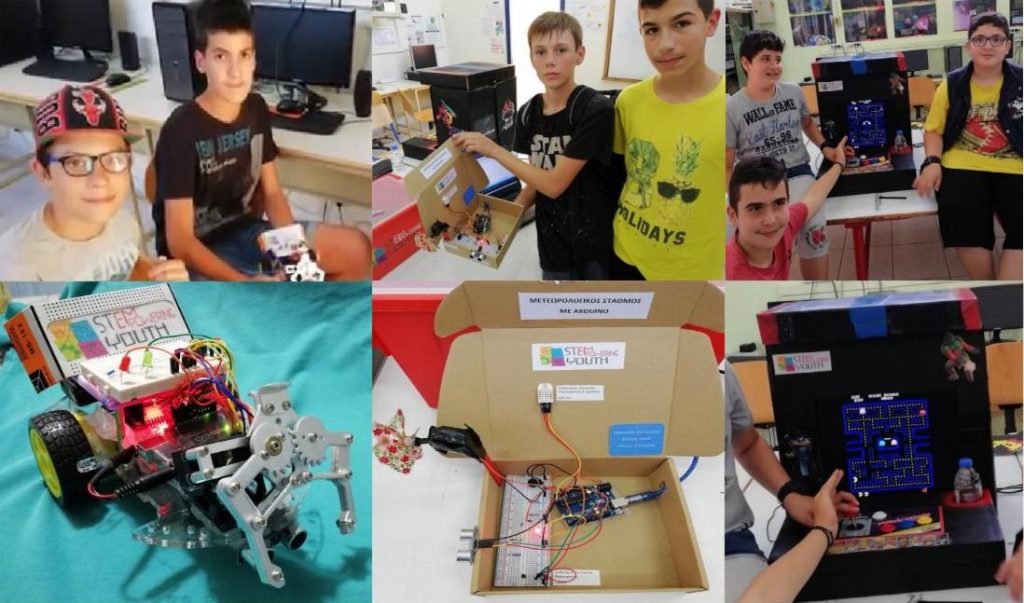
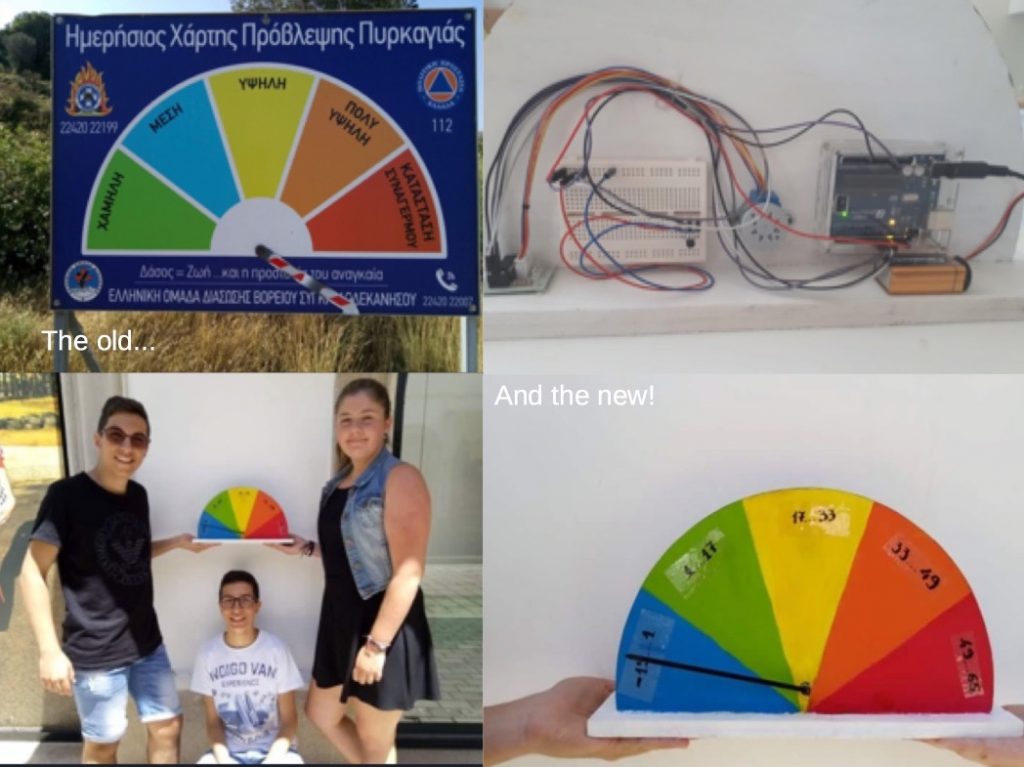
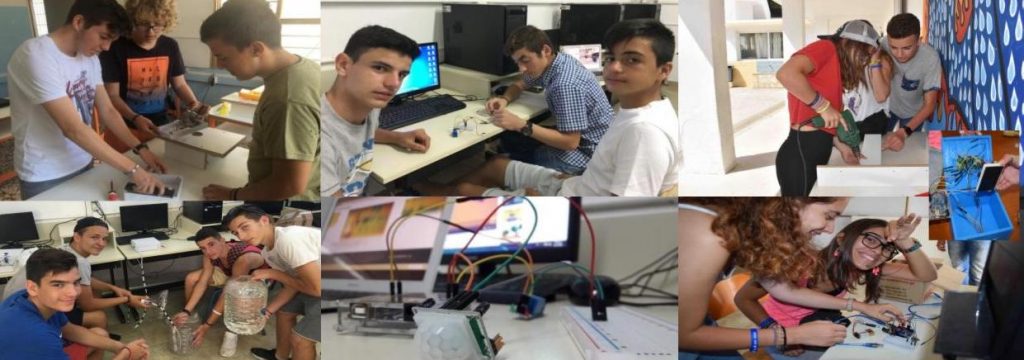

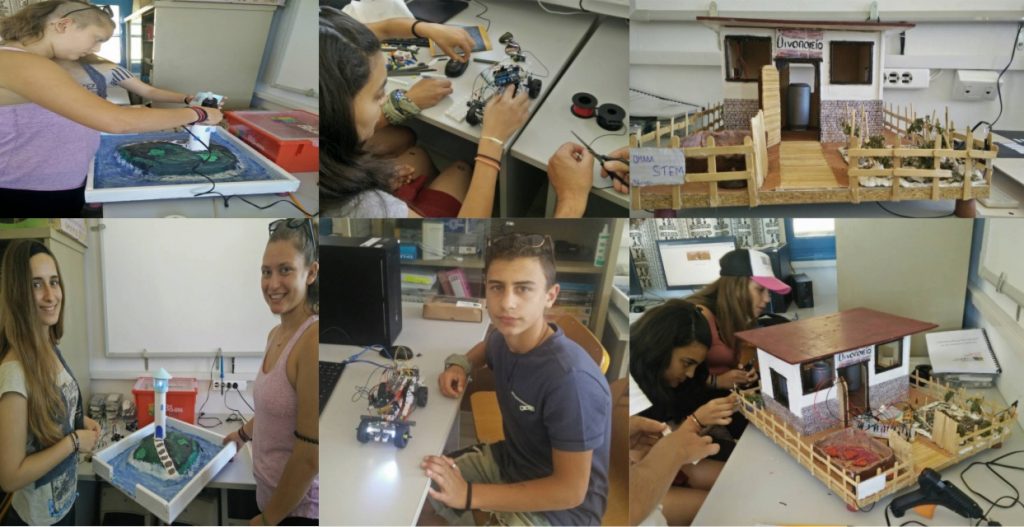
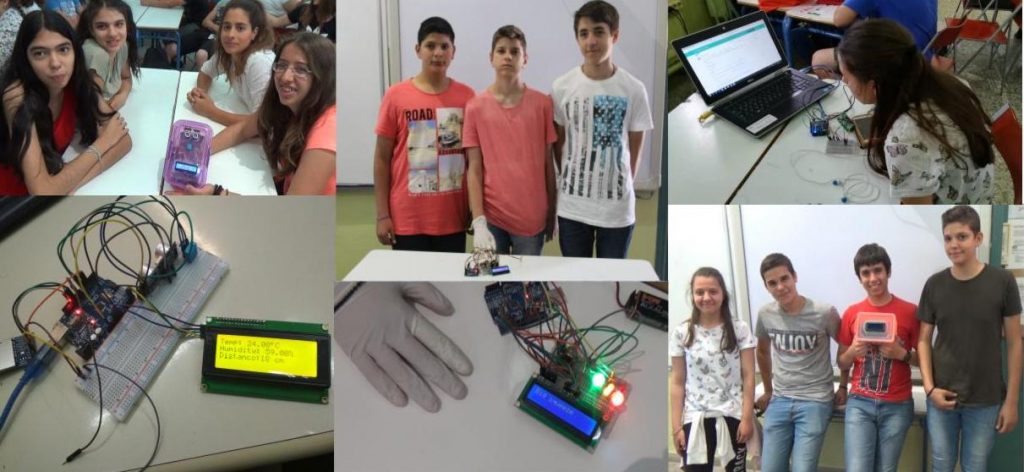
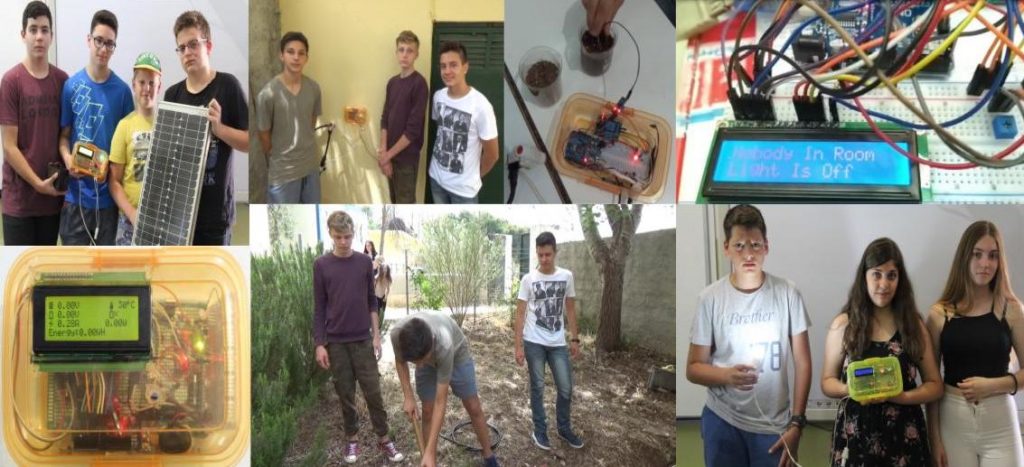

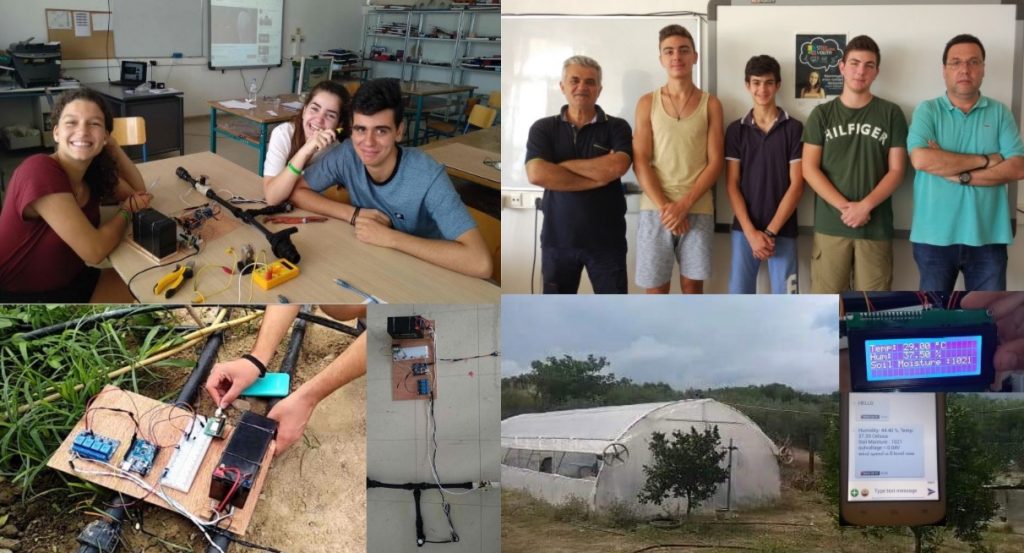


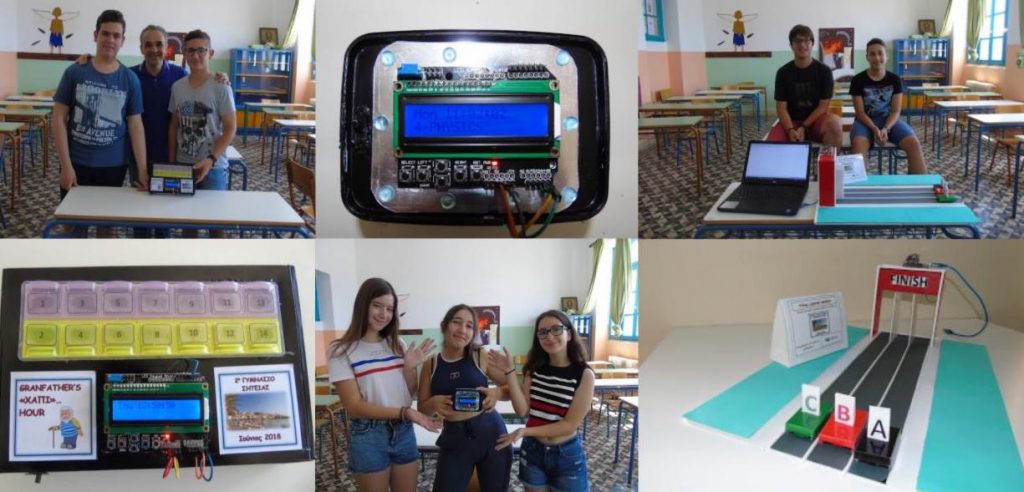
Comments are closed.